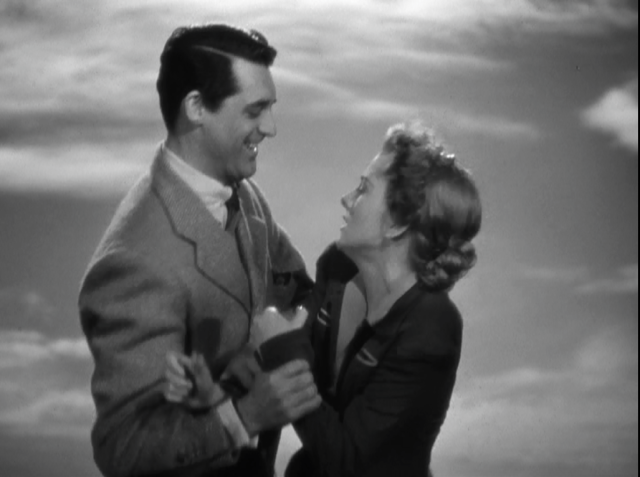
An attack, or playful flirting?
I had the privilege of revisiting Alfred Hitchcock’s 1941 thriller Suspicion with my daughter this week. The film is a fascinating example of Hitchcock’s work, because though it is often seen as a weaker entry in his filmography, I find it to have some of the most startling possibilities for a viewer of any of his films. Most of his films wrap up with a neat finish, whether tragic or triumphant. This one presents ambiguities that are not really resolved, right up to the final moments of the film. The film is a psychological examination of an unhealthy marriage, with an ending that is dramatically different from the novel that it was based upon. The way we interpret that ending can be quite different, however, depending on what perspective we bring to the film, as I discovered while discussing the film with my daughter after our viewing.
Suspicion is the first of four films that Cary Grant would make with the Master of Suspense. He would go on to star in my favorite Hitchcock film, Notorious, as well as To Catch a Thief, and finally North by Northwest. The story is based on the novel Before the Fact, by Francis Iles, and tells the story of a young, bookish woman named Lina (Joan Fontaine) who impetuously falls in love with gadfly, socialite, and playboy Johnnie Aysgarth (Grant). The two marry, and it soon becomes apparent that he his charm and seductive manner covers over his lack of means: his “wealth” is an appearance built out of gambling windfalls and friendly loans, and eventually theft. François Truffaut summarized the scenario, and how it differs from the source material in this way:

You must be logged in to post a comment.